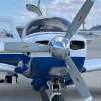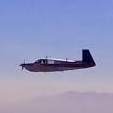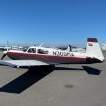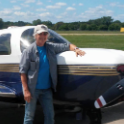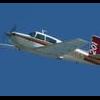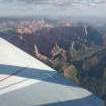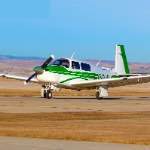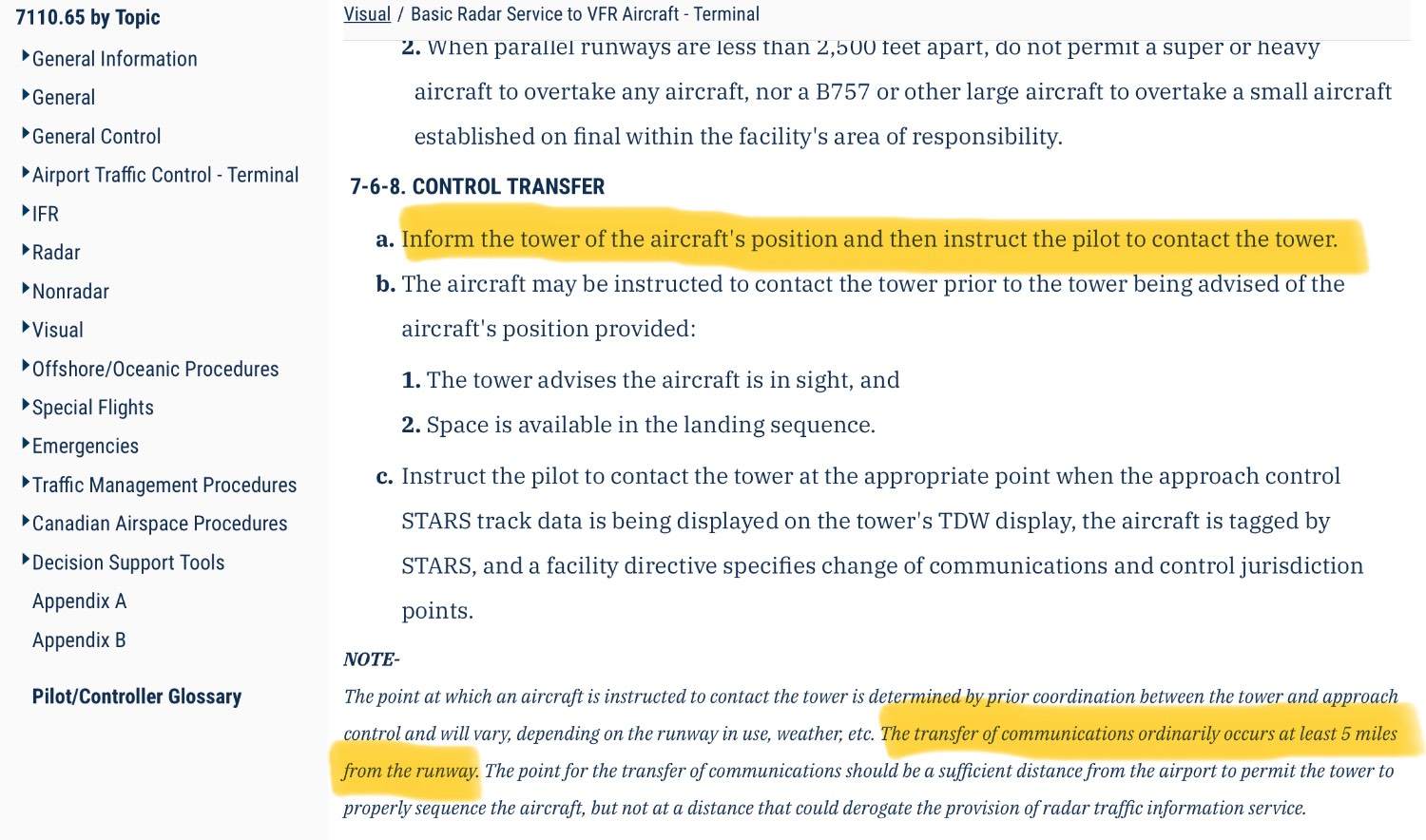Leaderboard
Popular Content
Showing content with the highest reputation on 07/26/2025 in all areas
-
The park was gorgeous. I put on a 360 mount to do some recording, and it turned out great. We only flew in it for an hour. We went up Ruths Glacier, flew around a little in that area, and then spiraled up to pass Denali, then down another glacier (not pictured). Most of the other passes were fogged in, so we kept it pretty conservative. The other pilots flying were super chill and gave us tips. I kind of wish I had recorded that. Overall, I wish we did it longer, and I wish we could do it again. The weather is shot for the next few days, and then we need to head back to MN. I forgot the cowl flaps on some of this. I climbed from 6,500 to 16,500 and forgot to close them when we reached the top. Oh well.6 points
-
There's a little bit of fudge in here, but these are the basics. The communication rules for Class C and D airspace (FAR 91.129 and 91.130) require the establishment and maintenance of communications with "with the ATC facility having jurisdiction over that area" (Class D) / "with the ATC facility having jurisdiction over that area "(Class C). The problem in situations like yours - into the Class C primary - and more generally, TRACON to Tower in either airspace is that you and I really don't know who that is. That for various reasons, most of which are agreements between TRACON and Tower we are not privy to. Two examples (among hundreds). This is a Class B to D example, but it's the same situation. The specific airspace doesn't matter but it helps for this example. Those familiar with the picture at the bottom will recognize it as the Denver Class B centered on the BJC Class D. The Bravo starts at 8,000. Below is the BJC Delta. On this training flight we were not talking to Denver and were planning to cross over BJC. My student called BJC Tower and requested transition at 7,500. Tower told us to call Denver Approach. There's a letter of agreement between BJC and TRACON giving DEN jurisdiction of that segment of BJC's airspace. At one time Pueblo, Colorado's (KPUB) Class D had its own Approach Control. I've been given pattern instructions and landing clearances there from Approach. The regs don't know this, but ATC does. So the ATC manual tells controllers that it is TRACON's responsibility to "Coordinate with the appropriate control tower for transit authorization when you are providing radar traffic advisory service to an aircraft that will enter another facility's airspace." There's a not to that paragraph: "The pilot is not expected to obtain his/her own authorization through each area when in contact with a radar facility." It's also TRACON's responsibility to "Transfer communications to the appropriate facility, if required, prior to operation within a surface area for which the tower has responsibility." That, in short is why what happened is no big deal and why once told it was TRACON's fault, the tone of the conversation changed. The one caution I have is this. I have no problem with remaining mum and happily transiting a Delta while talking to TRACON. But I see landing at the towered airport differently. Less from a regulatory standpoint than from a practical one. It's tower's job to coordinate runway access. A delayed handoff can cause problems for a busy Tower. So I will always prompt TRACON for a handoff if I am landing. Yes, that's a bit fuzzy, but those who have gotten rid of the last remnants of their their ATC-phobias don't worry about it much.2 points
-
I wonder if your breathing shallow beeaths abd the full bolus of O2 is not reaching your lungs? I find when i get to higher altitudes my breathing gets shallower until i notice the drop or my o2 ring buzzes then it reminds me to sit up not slouch and take deliberate deep breaths and that improves my o2 sat2 points
-
We competed in our 7th (I think) AirVenture Cup this year. This is an annual air race that is held the weekend before Oshkosh. This is grass roots air racing - not Reno - sort of like a 10k of air racing. The basic idea is you fly a ~350-400 nmi cross country course, and the fastest race in your category wins. This was the largest field racing yet - over 100 airplanes. Sadly, only 3 Mooneys (2 M20J's in the FAC3RG class). I think I can speak for the 3 Mooneys out there - we would LOVE to see more head-to-head Mooney competition. If they have 5 airplanes of the same type we can get our own class and our own trophy. Consider coming out and racing next year. If you're thinking about it, let me know, and maybe we can get the right number to have our own class! (Another benefit of the AVC is that all race planes can be parked at near show-center. Though you can't camp show-center, its an amazing way to have a base of operations with coolers, chairs, air show watching, etc. We were parked one airplane in from the 18L taxiway and a short walk to the central square. It was prime parking!) Our speed this year was 190.4 mph - we would love to meet a 201 that is faster! Results for this year's race should be posted soon: https://www.airventurecuprace.com/racers/race-results/ If you want to try out air racing sooner than Oshkosh 2026, the Sport Air Race League still has a couple events left in Texas for the season: https://sportairrace.org/sarl/node/12 points
-
2 points
-
Not unairworthy, just easy for regulation pedants to argue that it is unapproved. Clearly there are IA's on both side of that argument, which is not at all surprising. Since 337s are generally not checked by anyone but the IA in most cases, their word goes.2 points
-
Have a practically new 200 hp intake boot. as always if you do not like it for any reason such as wife did not approve it just return for full refund. $400 including free shipping Jerry P 423 231 3491 acpartswhse@aol.com1 point
-
1 point
-
I’ve been curious how much of Lycoming’s business is on the UAV side. If you have nation-state customers with deep pockets who buy in large quantities, it’s easy to see how the bugsmasher crowd might get a lower priority.1 point
-
Last year after being cleared through the Bravo airspace for the transition over Sky Harbor (Phoenix) airport, I got cleared for "all VFR altitudes", so I climbed up to my cruising altitude of 7500', which put me back in the bottom of one of the Bravo shelves right at the edge of the Bravo airpace. The controller was annoyed and called me back and said he "wasn't expecting that". Well...1 point
-
This is another area where IFR melts away the problems. Sounds like poor culture and practice on ATC's part, though.1 point
-
This discussion has gone on forever, I don’t mean the discussion in the forum here, but the discussion about whether you can enter a Class B, C or D while on Flight Following, without meeting the airspace rules for contacting the tower or getting a clearance before entering. And the answer forever has always been the same. No, you cannot. It is your responsibility to contact FF and prompt them to hand you off, and/or do a 360. Will you get a violation? Unlikely. But it is your responsibility and not the controller’s to stay out of controlled airspace when VFR until specifically authorized to enter.1 point
-
I had too much trouble with the one from Vantage so I got one from Mooney. The two speaker grills would not fit and the center section with the switches and air flow control didn’t fit right either. If all of the parts had been available from vantage I expect they would work but mixing the Mooney and Vantage parts didn’t work well.1 point
-
Last time I stopped there was when I was flying @EricJ’s airplane to DM’s. I was checking out the engine because it was using a lot of oil. The guy from the FBO came over and asked if I would like a burrito. They were good. That was a few years ago. I was flying back from New Orleans and we stopped in Pacos and spent the night. I would suggest continuing on to El Paso.1 point
-
I flew into GEG Spokane international a couple of weeks ago. I was on flight following with Approach which handed me off 12-15 miles out to the tower. So seems like this is what the tower wanted in your situation rather than approach directing you into the traffic pattern. That’s understandable but they should save their anger for whoever was running approach. Personally I’ve always considered approach, tower and ground to be different parts of one entity. If I land and tower gives me taxi instructions as I clear the runway should I have to worry about being yelled at by ground for doing what I was instructed to do? How are we supposed to know tower hasn’t asked approach to send people into the traffic pattern for them? If they aren’t then why are they not giving the handoff at the right time? If this is how ATC operates then how are we supposed to trust them? I get their jobs are difficult and I don’t expect perfection, but don’t blame the guy who did what you told him to do. That just creates a toxic environment.1 point
-
1 point
-
Thanks you. Unfortunately this is not the full maintenance manual. But does have a lot of good info.1 point
-
1 point
-
I believe O2 tanks have a rated BURST pressure above 6000 psi. Normal fill is not over 2000 psi. Pressure is proportional to temperature (on absolute scale). So, if pressure at 80 F (300 K) is 2000 psi, then to get to 6000 psi would require a temp of 900K; which is a bit over 1100 F! Even a Phoenix ramp in summer is going to fall a bit short of that! I think you're pretty safe not to worry about it1 point
-
They’ve pushed that deadline back 6 times now, I doubt it will be “mandatory” anytime soon. The adoption rate is abysmal because of the cost. NavCanada (our ATC provider) is a private, not for profit corporation that was given exclusive control of the skies way back when the federal government sold organizations off to balance their budget. One of Navcanada’s not-so-brilliant ideas to save themselves money, was to decomission the ground based radar stations, in favour of a space based coverage solution. With the enormous geography of Canada, you can see why this is appealing. Without any public consultation, NavCan kept releasing “mandates” for 1090 ADS-B implementation. It’s worth noting there was also some funny business regarding the ownership of the satellites that were put up in orbit, as to who stands to profit from their use, etc. but I digress. So, all of a sudden, the user (me) who ALREADY PAYS USER FEES is now told that I better hurry up and go spend $20,000 Canuckistan copecks on a fancy ADS-B install or else I’ll be grounded. Imagine being forced to buy something that expensive that you neither want or need? It didn’t work. The adoption rate was so abysmal that NavCan had no choice but to leave their radar operational, and it’s been going on like that for close to a decade now. I fly for the airlines and I’ve had the chance to sit down with some center controllers and discuss this. As far as they’re concerned, your ADS-B is invisible, unless they really go looking for your data which they have no time to do. The only time it’s of concern is when outside an area of radar coverage in the mountains, in which case they usually pick you back up on the other side shortly. The same thing they’ve done since radar was invented. I don’t have ADS-B, even 978. I’m still on my original KT-79 Mode C. I fly across Canada up to 18,000 all the time IFR as well as down into the States frequently. Hasn’t been an issue. In fact, last week flying north from Provo, UT I had filed IFR way around the class B rule airspace. In addition to having the mode C equipment code on my flight plan, I reminded the SLC Center controller I was not ADS-B equipped, twice, and still I was provided clearance straight through the Bravo. They really didn’t seem to mind. Might have gotten lucky and they made an exception that day for the “silly Canadian in his little Mooney” but I can confirm, in Canada, you’ll have no problem getting around without ADS-B.1 point
-
1 point
-
If you were talking to approach and got handed off, yeah I think this is a “them” problem you were following their directions File a NASA, get a copy of the tapes (liveatc?), call the tower back as ask to talk to the supervisor, record everything, Someone screwed up and you are being taken for a ride1 point
-
However frustrating this incident was, I think the best response is to contact ATC and say “THANK YOU” for the call out! Thanks for sharing your story because it’s a reminder for all of us to keep our heads on a swivel! Heck, I remember a flight where a small gaggle of geese in tight formation popped out from the backside of cumulus cloud while I was on an IFR flight plan at 8000’ and my immediate thought was what the heck are they doing at this altitude for that direction of flight!!!1 point
-
I'll endorse Don's detailed reply. It is an amazing event. IMO, the experience is best enjoyed camping with your plane so you avoid the awful logistics of driving/parking/hiking/sitting in traffic every day. The permanent facilities include buildings with real sinks, toilets and showers so as far as camping goes, it is NOT roughing it all. You cannot beat the camaraderie when hanging out with so many like-minded folks and the coolest planes on the planet everywhere. Arriving with the Caravan doubles the fun too, and having the big party tent and meals there (along with tables, chairs, lights, etc) make it even easier to stay in the North 40.1 point
-
You are completely WRONG! AirVenture is the most organized event you will ever attend. They have their act together with more than 5,000 volunteers who joyfully are there to assist. Plenty of tables, many with umbrellas surround the food vendors, plenty of food vendors all over the venue, although expensive. There are many, many port-potties scattered at convenient places all over the venue and they are maintained throughout the day multiple times. No lines for them. No Smell to them. For over 650,000 people the grounds are kept immaculately clean. Traffic is as well organized as possible with "In" direction in the morning and reversed to "Out" direction in the afternoon. I will say, though, that it is a pain in the butt. Police man the main entry roads and control the traffic lights, and volunteers direct traffic once you gain entry. Busses are provided from the parking areas and have priority with their own special lane. The venue is huge and there are multiple trams that have various routes throughout the grounds. Anybody who is anybody in aviation is there hawking their wares in 4 large hangars. The new airplanes from the big and small companies are displayed outside. There is fly-in airplane camping parking surrounding all the runways; enough for the 10,000 airplanes that fly in. The RV area is like a city in itself. The "cream of the crop" air traffic controllers from around the country control all of the air traffic. There are forums in the forums area every day given by many well know speakers. The FAA also has a building and has seminars all day long. If you're a lifetime member of EAA, the Oasis on the front line has all kinds of snacks and tables for free in an air conditioned building. If you are a donor you step up even more and have access to the PHP house, that also has even better snacks than the Oasis. EAA hosts almost a dinner there from 4-6 Monday, Tuesday. and Wednesday. If you're a donor or exhibitor, AOPA puts on a great free breakfast and has an outstanding dinner at the Waters house of the Lake on Tuesday evening. Hundreds of people show up to that. As you get older, 4 wheel scooters are available to rent for the day and have enough charge to get you anywhere on the grounds. Many years ago I almost laughed at the thought of ever needing one but, alas, for the past year and now again for this year I've needed to rent one for my special person. Flying in with the Mooney Caravan was fun for a number of years. The camaraderie is great. However, I park in Madison and drive up to Oshkosh because I don't want to park on the grass for the week, and I found that by the time everyone had debriefed and I got set to fly back to Madison, the thunderstorms often started building. So I haven't flown in with them for the past few years. And then there is the pure adventure of traveling more than half way across the country, stopping at places you probably never would have seen, meeting people you never would have met (I've got some great stories of people I've met going to Oshkosh at fuel stops). This is year 25 and counting. I hope I've conveyed a little bit of the excitement of AirVenture, It's a lifetime experience not to be missed.1 point
-
Welcome to the Internet. The other factor is, the manufacturer recommendations are based on worst case. So MOST people are good with an Inogen One G3 and two people up to 14K and one person to 17K. But SOME people may be able to fly higher. Heck, my last trip I was on ships O2 at 17K outbound and had to go to the F2 setting on my O2D2. But on the trip back at 16K, I was fine on N5 setting. So MY PERSONAL needs change from day to day.1 point
-
I reached out to FAA Civil Aerospace Medical Institute (CAMI) and they're looking to see if any recent studies have been performed with modern oxygen concentrators. They sent me a prior study using molecular sieve oxygen concentrators, and the AC on portable oxygen concentrator use in flight (more geared to pax bringing concentrator than pilot use). From their comments: * Generally, 1.5 Liter per min flow rate is only good up to 15,000 feet. 2.0 liter flow is good up to 20,000 feet. You see the connection. 2.5 liters would be required at 25,000 and 2.8 at 28,000. Obviously if you’re over 25,000 feet you would be in a pressurized aircraft (by FAR). And if these are molecular sieves that concentrate the oxygen there is typically an argon build up int stored oxygen (some units are high as 5%. That would account for the variability of the oxygen % levels. But that was with older models…newer ones may be better at scrubbing the argon out. * Questions about the practicality (and regulation) of using portable oxygen (O2) concentrators designed for medical use in general aviation (GA) aircraft have come up a lot lately. It’s questionable as to whether these units can remain efficient in an unpressurized cabin at higher altitudes (~ 10,000 up to 25,000 feet), even with a cranked up O2 flow rate. CAMI tested some portable O2 concentrators in an altitude chamber up to 30,000 feet back in the early 1990s (1st attachment), but this research was with very early model concentrators, which I suspect have vastly improved since then. CAMI has conducted no further/recent research on such units. We’re doing a trawl of the research/medical/aviation literature to see if there’s anything more recent; I’ll let you know if we come up with anything. The general gist is that there was WIDE variety of altitude limits show with the study done in 1992 from equipment to equipment (see page 6, figure 2). Modern oxygen concentrators MAY, or MAY NOT, have better efficiency and efficacy with oxygen concentration. The big question is what is the composition of concentrator output at high altitude? Given that the density of air at high altitude is less, the total amount of oxygen in the air is low even if it's much higher concentration proportionally. So in many respects, what we have to base use on is manufacturing data (not sure the details of what was tested and how in many cases), and field trials. But we do have the use of pulse oximeters that can help guide individual use to say that at minimum if equipment is, or is not, able to provide basic SPO2 requirements. Regardless of the equipment you use, I'd recommend that every pilot use a pulse oximeter regularly and test flight performance of their equipment on routine basis to make sure that the cannula, mask, flow rate, pulse dose, etc. work with their physiology and flight profile. Portable Oxygen Concentrators (AC_120-95A; 24 MAY 2016)-1.pdf Comparisons of Molecular Sieve O2 Concentrators for Potential Medical Use Aboard Commercial ACFT (England et al., 1992)_DOT-FAA-AM-92_22-1.pdf1 point
-
I love the story Rich. I can picture one nurse to the other "what's he doing in there??" "Don't know, must be the drugs!" "Let's just hope he doesn't try the pulse ox on more than just his fingers!" But perfect description of waveform showing that you have accurate information...waveform acts up = probably not giving accurate information. Also why most quality pulse ox's have some type of graphical output of waveform (bar going up and down, or a wave tracing). Respiratory rate is either calculated from the pleth if just using a pulse ox. All the calculations are complicated, but it can use the data from the pulse ox to estimate respiratory rate and they are pretty accurate most of the time. https://pmc.ncbi.nlm.nih.gov/articles/PMC4309914/ But respiratory rate in a hospital setting is sometimes based on end tidal capnography (ETCO2). For you it might have been a a small mouth scoop on the nasal cannula to capture exhaled CO2 via the tube and measure that numerically / show wave form (breathe in CO2 drops, breath out CO2 goes up). ETCO2 is also connected inline to ventilators and advanced airways. Respiratory rate & ETCO2 are both great for catching early apnea (not breathing) or ineffective breathing before you begin to desaturate. Graph showing a basic idea of what happens when you paralyze a patient, they aren't breathing, and how long it takes their oxygen saturation (SaO2) to drop...usually it's somewhere around 3-6 min. Versus if you stop breathing your end-tidal CO2 (exhaled amount of carbon dioxide) drops immediately. So for procedures, respiratory rate and ETCO2 are super helpful to catch issues before they result in drop in oxygen levels. This is somewhat pertinent to pilots as well, as everyone has different baseline physiology that may or may not result in desaturation more quickly with an oxygen issue in flight. We can't always predict who will, or will not, desaturate more rapidly, but critical ill patients, obese patients, and children usually desaturate quicker than a normal, healthy adult.1 point
-
This is misleading, because oxygen equipment is doing exactly what it was designed to do. But the part you’re missing is the testing. given that we are all different I wouldn’t advocate ANYONE use oxygen equipment without directed self testing. Heck, we’ve had pilots that the O2D2 didn’t work well for as well as systems where it worked very well. there are recommendations, guidelines, and regulations. They aren’t the same. Some pilots need oxygen at 10,000 ft. some may not get a pulse delivery system to work well for them. Some will. what we don’t have is extensive testing of service ceiling if the various units. there’s nuance here. Don’t paint in such broad strokes. follow regulations. But take manufacturer recommendations as a place to be confirmed by end user testing. They might be over or understated.1 point

